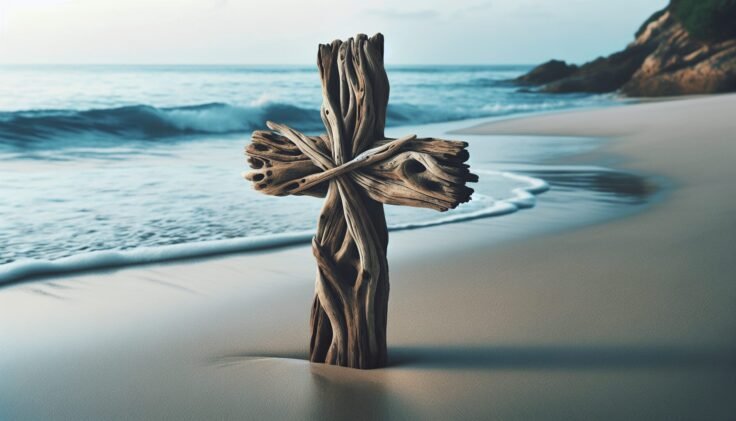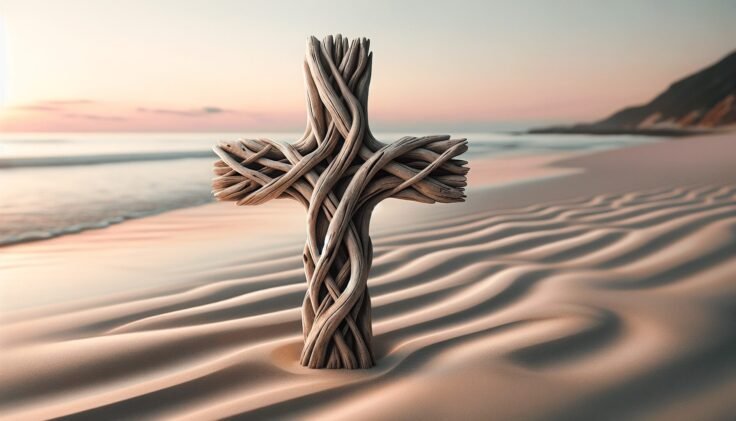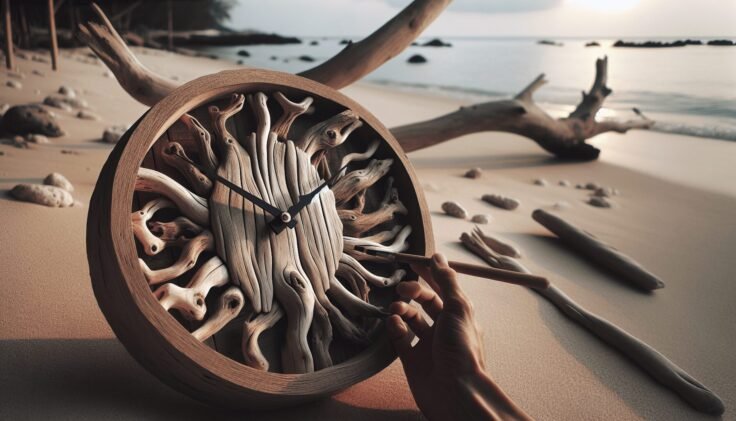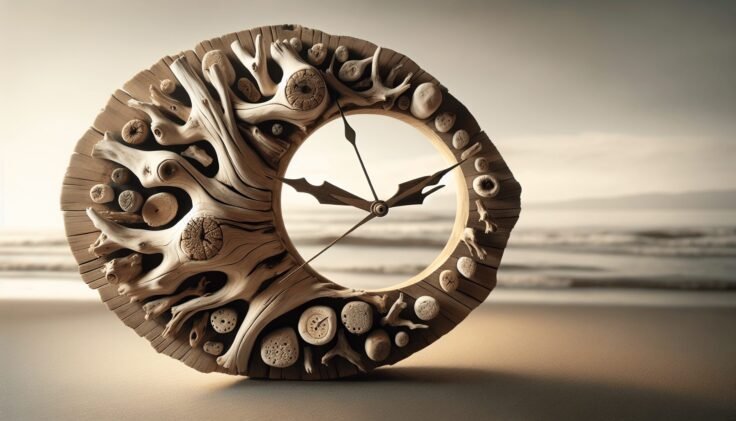Have you ever admired the charm of driftwood when you visit a beach or a lakeside? There’s something magical about the way pieces of wood are weathered by the untamed forces of nature, crafting unique textures and forms. Driftwood carries a story, molded by the waves and elements over time. What if you could transform these beautiful relics into something both artistic and functional? Making a driftwood keychain is not only a great way to preserve a piece of your favorite shoreline, but also to carry a memory with you wherever you go. Let’s embark on this enjoyable and rewarding DIY journey together.
Understanding Driftwood
Driftwood is wood that has been washed onto a shore or beach by the action of winds, tides, or waves. It is often smoothed and worn into interesting and intriguing shapes. Driftwood is prized not only for its unique appearance but also for its sustainable and organic qualities. Before starting your keychain project, it’s essential to know a bit about this lovely material.
The Origins of Driftwood
Driftwood can originate from various sources. It might come from trees or shrubs that live by the water’s edge, carried away by floods or tides. Many pieces of driftwood begin as parts of larger logs or branches that get washed away by rivers. Over time, ocean currents carry this wood, breaking it down into smaller pieces with unique shapes.
The Fascination with Driftwood
The appeal of driftwood lies in its individuality and natural beauty. Each piece has its own texture and form, shaped by the elements over time. This individuality lets you create keychains that are as unique as the driftwood itself. Plus, using an eco-friendly material like driftwood aligns with a sustainable lifestyle, making it an ethical choice for DIY projects.
Gathering Driftwood
Now that you appreciate the beauty of driftwood, it’s time to gather some pieces for your project. The best places to find driftwood are beaches, lakesides, and riverbeds. Let’s walk through a few steps on how to collect the ideal pieces.
Locating Your Treasures
Whether you’re walking along a sandy beach or a rocky lakeside, look for pieces that appeal to you. Consider their size, shape, and texture. Remember, you’re looking for small pieces that would work well as keychain accents. It’s helpful to note that some beaches might have restrictions on collecting natural objects, so always be mindful of local regulations.
Choosing the Right Pieces
For a keychain, you would want small, lightweight pieces. Look for pieces that fit comfortably in your hand and have enough thickness to withstand day-to-day wear as a keychain. Aim for those that have interesting shapes or textures. Don’t forget, each piece you choose tells a unique story through its form and pattern.
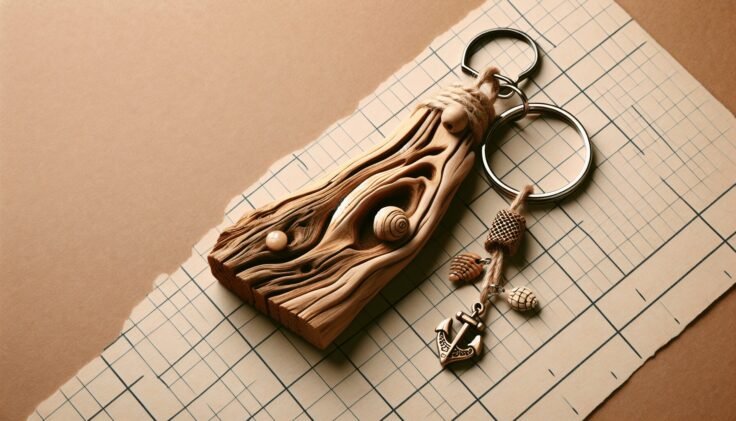
Preparing Your Driftwood
Once you’ve gathered your chosen pieces, it’s crucial to prepare them for use. Preparing driftwood adequately ensures they are clean, preserved, and ready for conversion into a keychain.
Cleaning Driftwood
Driftwood may be covered in dirt, sand, or salt due to its time spent in the wild. Start by rinsing your collection with fresh water, scrubbing them with a brush to remove any debris. You can soak them for a few hours in fresh water to eliminate salts and other impurities. Once clean, allow them to dry thoroughly.
Sanitizing the Pieces
To sanitize the driftwood, consider boiling them for an hour. This process will remove any bacteria or organisms lingering in the wood. Once boiled, let them dry completely, preferably in a sunny spot. The drying process might take up to a few days, depending on the size and thickness of the wood.
Designing Your Keychain
With clean and sanitized driftwood, you are now ready to start designing your keychain. Designing your keychain involves creativity and a personal touch, adding charm to your everyday carry.
Choosing Your Design
The design process is all about personal preference. Would you like a simple piece of driftwood pierced through with a keychain ring? Or do you envision a cluster of smaller pieces adorned with beads? Think about the look and feel you want to achieve. Sketching out your ideas may help visualize the final product.
Embellishing Driftwood
You can enhance the natural beauty of driftwood by adding embellishments. Consider using paints, varnishes, or even metal leaf for a touch of glamour. If you’d like to incorporate additional materials like beads or charms, plan how they will attach. Use strong adhesives or creative knotting techniques to bring together these elements.
Assembling Your Keychain
Now that you have a design in mind, it’s time to assemble your keychain. Assembling requires a few tools and materials which are easy to find and use.
Tools and Materials Needed
Here is what you will need to assemble your driftwood keychain:
| Tool/Material | Purpose |
|---|---|
| Keychain rings | To attach your driftwood piece to your keys. |
| Drill with a small drill bit | For creating holes if needed. |
| Sandpaper (fine grit) | To smooth any rough edges. |
| Strong adhesive (e.g., epoxy) | For attaching embellishments. |
| Paint, beads, charms (optional) | For decoration. |
Step-by-Step Assembly
Prepare the Driftwood: Ensure your driftwood piece is clean, dry, and any rough edges are sanded down for smooth handling.
Drill Holes: Use the drill to make a small hole at the top of the driftwood piece if you plan to string it directly onto a keychain ring.
Add Embellishments: If using paints or other decorative items, apply them now. Allow any adhesives or paint to dry as per the instructions on their packaging.
Attach to Keychain: Thread the driftwood onto the keychain ring through the drilled hole or attach using your chosen method (e.g., adhesive with additional décor elements).
Finishing Touches: Once all pieces are assembled and dried, ensure everything is secure and the keychain looks as you imagined.
Tips for Success
Creating a driftwood keychain is a rewarding process, but there are some tips and tricks to ensure everything goes smoothly.
Playing with Proportions
When designing your keychain, consider the proportion relative to your keys and other objects you carry. A bulky or oversized keychain might not be practical for daily use.
Sealing Driftwood
To maintain the beauty of your driftwood and protect it against daily wear, consider sealing it with a clear wood sealant. This step adds durability while enhancing its natural shine.
Personalization Ideas
Personalize your keychain for yourself or as a gift. Carve initials into the wood or add charms representing a favorite hobby or memory. Personal touches make your keychain truly unique.
Cherishing Your Creation
Congratulations on creating your unique driftwood keychain! This project not only results in something stylish and practical for yourself but can also be a memorable gift for loved ones. Driftwood keychains carry both a personal and natural narrative, encouraging you and others to appreciate the artistry found in nature and the joy of crafting with your own hands.
Your driftwood keychain is now more than an accessory; it’s a testament to creativity and the timeless beauty of nature. Enjoy the satisfaction of carrying your little piece of nature with you wherever you go, always reminding you of the power and wonder of the natural world.






